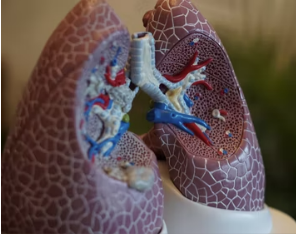BACKGROUND
Ventilators are an indispensable piece of medical technology which move breathable into and out of a patient’s lungs. Several medical conditions employ the use of ventilators, such as intensive care units, surgery using general anesthesia, muscular dystrophy, cystic fibrosis, etc. Recently, the COVID-19 pandemic has drastically increased the demand for ventilators in hospitals. However, the current rate of ventilator production and its cost are both problematic for getting units built and the cost of those units (on average, ~$40,000). Although COVID-19 induced demand for ventilators is lower than at previous points during the pandemic, there is still a critical need for ventilators in both developed nations which is amplified in low-income nations.
SUMMARY OF TECHNOLOGY
Researchers at OSU have conceived and developed a low-cost mechanical ventilator. The ventilator can use a stepper-motor driven linear actuator to impel pumps, delivering oxygen (O2)-enriched air to a patient. A microcontroller manages actuator motion, reads inspiratory pressure (InsP), fraction of inspiratory oxygen (FIO2), and blood O2 saturation. The software interface allows the operator to set tidal volume, inspiratory to expiratory time ratio (I:E), breaths per minute (BPM), and maximum inspiratory pressure (PMax). FIO2, O2 saturation, and InsP along with volume are displayed on a strip chart. The software allows for variables to be set through a smartphone application wirelessly (Wi-Fi or Bluetooth), direct docking of a smartphone to the machine, or by computer interface. Data from the ventilator is also logged to a solid-state drive in real time. Additionally, alarms are triggered if PMa is exceeded or O2 saturation drops below a designated level. The smartphone application may set and monitor multiple ventilators simultaneously and multiple smartphones can monitor the same machine, allowing staff to receive real-time alerts on multiple patients. These remote capabilities provide a substantial advantage over current control systems found in ventilators. The estimated cost of the prototype ventilator is $250, not only providing a low-cost option to hospitals in the United States, but enabling low-income countries to procure medical devices they need for this pandemic and other medical conditions.

POTENTIAL AREAS OF APPLICATION
- Medical settings, especially in low-income areas
- Home-based medical care
MAIN ADVANTAGES
- Low-cost (~$250 vs ~$40,000)
- Allows for multiple machines to be monitored wirelessly via smartphone or computer
- Uses same variables as existing ventilators
STAGE OF DEVELOPMENT